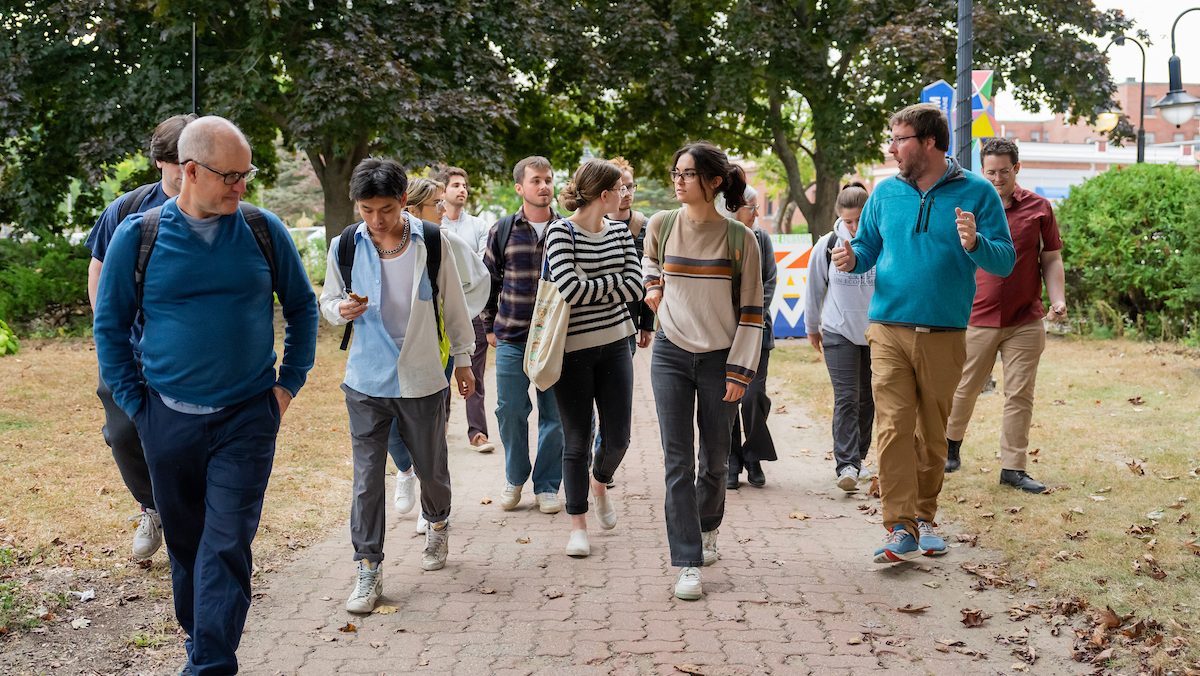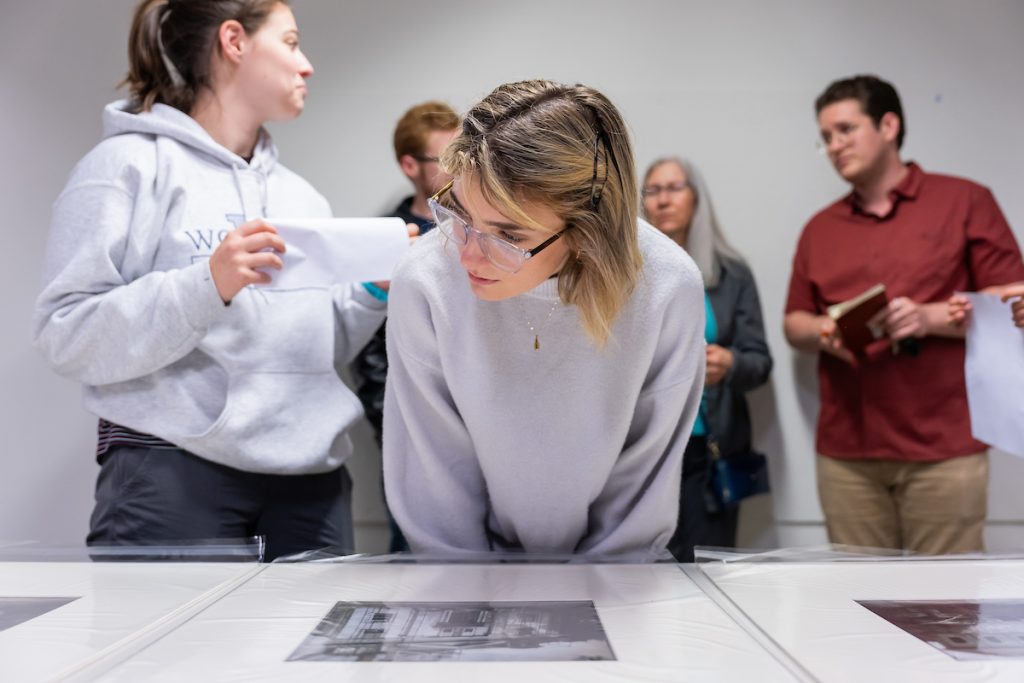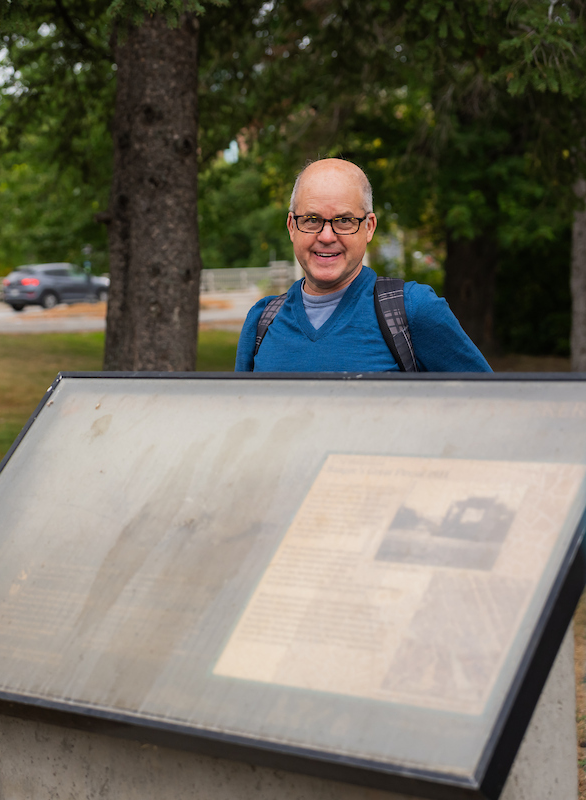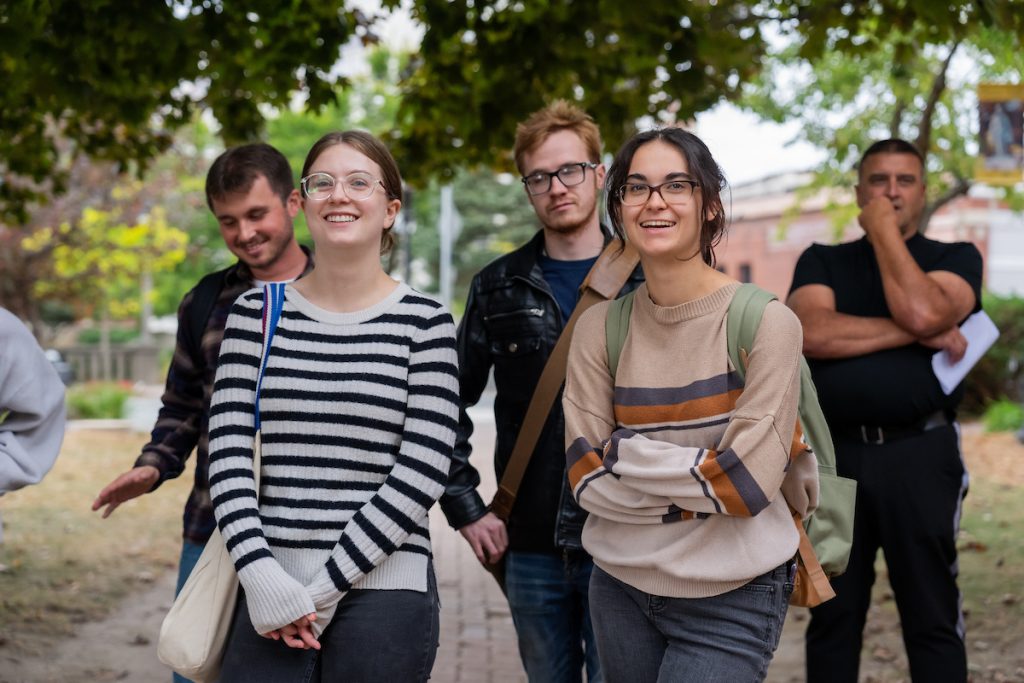
History students at UMaine partner with Bangor to rehabilitate Kenduskeag Stream Heritage Trail
A group of history students at the University of Maine have partnered with the city of Bangor to rehabilitate signs on the Kenduskeag Stream Heritage Trail, a 2.2-mile urban and wilderness footpath that intersects downtown Bangor.
Eight students created interpretive signs to replace damaged ones at points of interest along the trail. The new signs will tell stories about the history of Bangor, including the drowning of Charlie Howard, the Great Fire of Bangor in 1911 and the ongoing importance of Wabanaki people in their homeland.
Students will present their work to the public on Wednesday, Dec. 11 at the Bangor Public Library.
The city will use the student-researched signs as part of a larger effort to restore and upkeep the trail, a popular destination for city residents and visitors. City of Bangor Parks & Recreation has started replacing lighting along the trail and has dedicated $40,000 in capital funds to enhance it, which includes fabricating and installing new signage, replacing fencing and overall trail improvements.
“It’s a win for everybody,” said Bangor Parks & Recreation Director Tracy Willette. “And it’s been exciting for us to see the enthusiasm that the students have to follow through (with) this project.”
Willette said the partnership with UMaine couldn’t have come at a better time. Liam Riordan, professor of history, is teaching the senior seminar course responsible for the signage project.

His theme for the course is public history, the idea of communicating historical information to a general audience. The project encouraged group collaboration — among students and community partners — and creating dialogue with the public.
“This project has been the perfect close to my academic career at UMaine,” senior Madison Humphrey said. “It has pushed me out of my comfort zone, encouraging me to interact with members and organizations of the public.”
Humphrey said she didn’t know anything about her topic, Norumbega Hall and the Fire of 1911, until the class.
“Now, my friends and family think I’m crazy every time we drive by Norumbega Parkway and I spout facts and figures about this mythological ‘Quincy Market in Bangor,’” she said.
Her proposed sign includes an accessible link to a website with a walking tour and map of the downtown district that burned down.
The public presentation is intended to encourage the community to give feedback on the proposed signs. Riordan will then work on updating the content and design before the city finalizes and installs the new signs along the trail. Each sign is approximately 2 feet by 3 feet in size, and they will use the existing concrete pillars with replaced cases and plexiglass. If all goes well, Riordan said two new sign locations could be added to the existing ones.

The new signs include written narratives, images and QR codes that link to videos, songs, more images and websites for related organizations. The Bangor Public Library, Bangor Historical Society, UMaine’s Zillman Art Museum and Special Collections at Fogler Library aided students in gathering all of the historical multimedia content. In addition, the Clement and Linda McGillicuddy Humanities Center has provided funding to print prototypes of the proposed signs to share with the public.
“My involvement in working on the Kenduskeag Stream Trail signs has been nothing short of extraordinary,” said Amanda Levesque, a senior majoring in history. “I have been very fortunate to work with like-minded students on this project, which has proven to be a task, yet is so fulfilling at the same time.”
Levesque’s sign addresses the Estevan Gomes memorial, which the city removed in 2020 following an act of political activism that defaced the memorial and the trail sign commemorating it. Levesque said her new sign explains the truth of Gomes’ voyage of 1524 — his capture of approximately 58 Algonquian-speaking Indigenous people and attempt to sell them into slavery in Europe — and explains the Penobscot Nation’s historic and contemporary relationship with the Kenduskeag Stream and the local area around what is now known as Bangor.
The interpretive trail signs haven’t been updated since the city installed them in the early 2000s, and Riordan said the project shows how historical understanding changes over time. A website linked to the new trail signs will include access to PDFs of the original trail signs for comparison. Riordan also noted that a recently issued online survey requesting community input can shape the content of the new signs, which are still being modified.
Earlier in the semester, the students presented their proposals to two different Bangor city commissions and at the Maine Archives & Museums Annual Conference in Lewiston.
In addition to gaining experience in public speaking and presenting research, the project has allowed students to form strong connections with each other through off-campus field trips, a shared sense of nerves and mutual reliance to see the project through to completion.

“While the class has certainly required a lot of hard work and late nights, I’ve rarely had to tackle it alone,” senior Liv Neuhauser said. “We carpool to class, grab coffee on our way to community events, and you can always find a few of us at the library bouncing ideas off one another.”
Neuhauser researched Stephen King’s influence on Bangor and said it has helped her see the ways in which popular culture can shape a city’s economic, social and cultural identity. Her sign compares the fictional places in King’s novels to the real places in Bangor that inspired them.
Other signs include discussions on organized labor and the founding of Bangor Public Library, the local impact of the lumber industry, the history of the Kenduskeag Stream Canoe Race, a petition to the state issued by the Penobscot Nation in 1821 to protect fishing resources on the stream, and a sign with a screenprint by artist Francis Hamabe to commemorate Bangor’s bicentennial in 1969 that also introduces the trail and provides a general orientation.
Contact: Ashley Yates; ashley.depew@maine.edu
